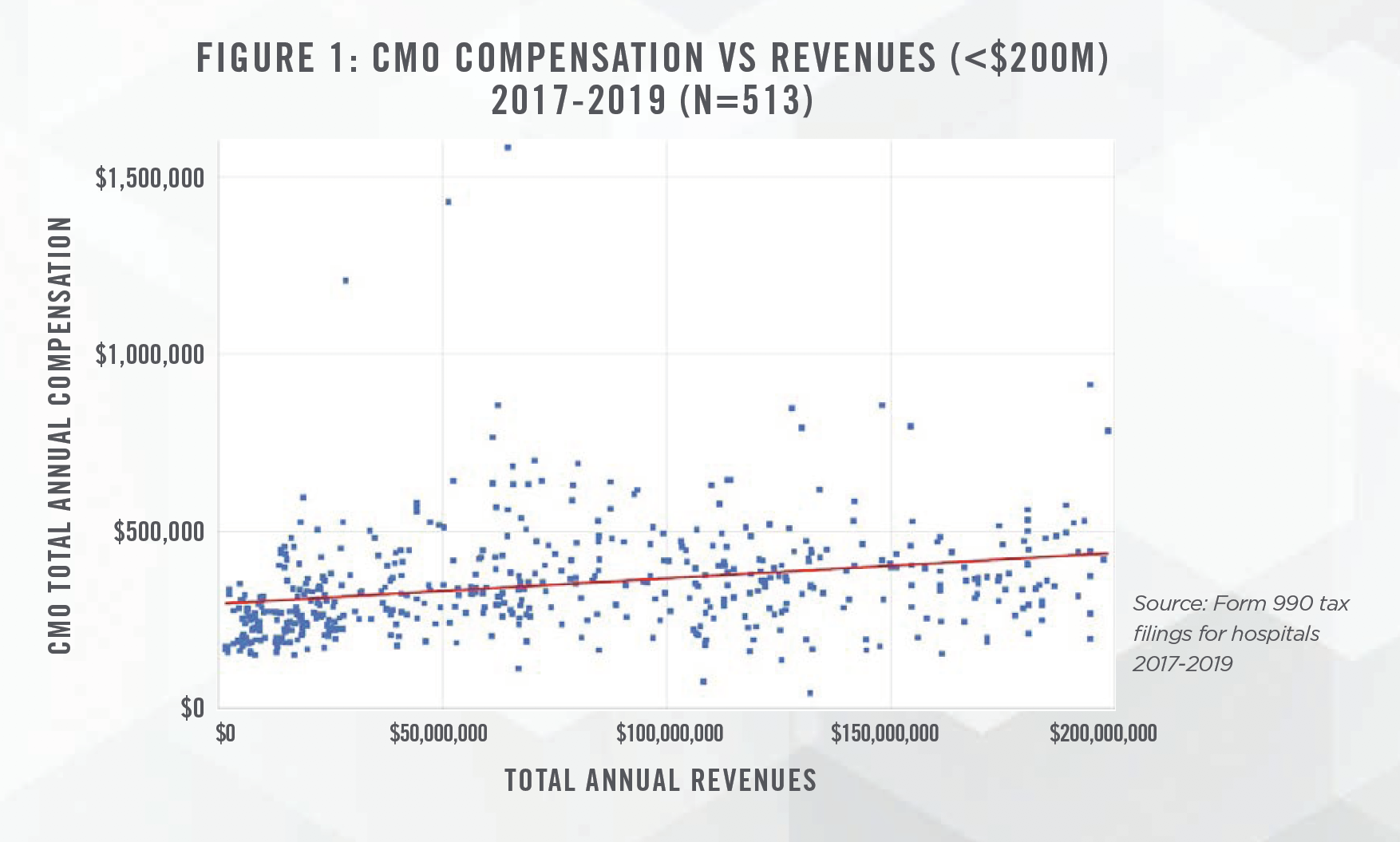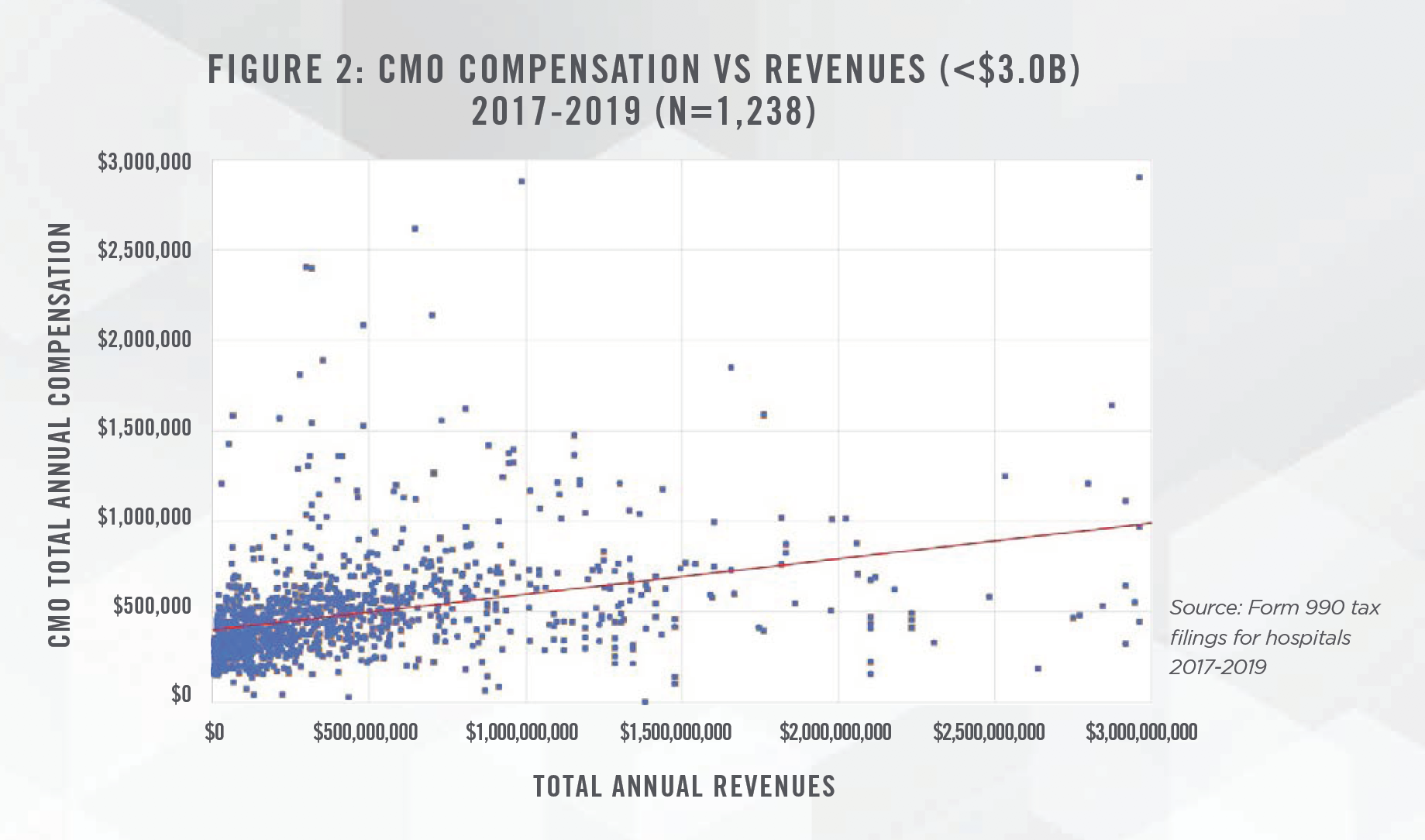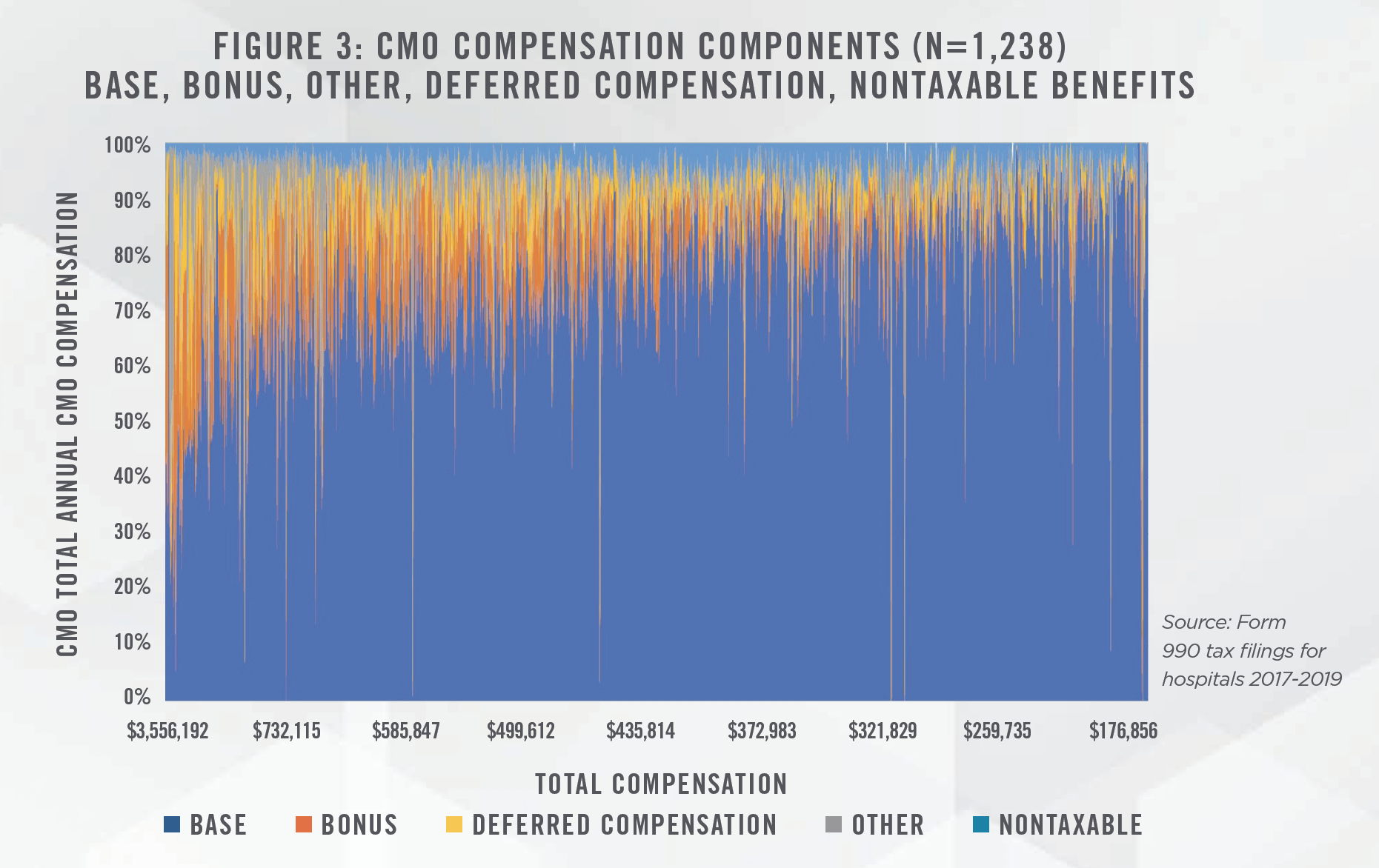Authors: Nicholas A. Newsad, MHSA

![]() OVERVIEW
OVERVIEW
Chief Medical Officers (CMOs) play a critical role in the success of healthcare organizations, tasked with standards of care, quality improvement, and medical staff affairs. Accordingly, CMOs often rank amongst the highest paid individuals within healthcare organizations. While competitive compensation is crucial to obtaining and retaining qualified CMOs, such compensation must comport with current healthcare regulations and guidance regarding fair market value, as well as each organization’s unique operational goals and objectives.
![]()
![]()
![]()
![]()
![]()
![]()
Total annual CMO compensation, including base salary, bonuses, deferred compensation, nontaxable benefits, and other forms of compensation, is positively correlated with employer organization size, as measured by annual revenue. Organizations with less than $200 million in annual revenue demonstrate moderately increasing ranges of total annual CMO compensation with increases in revenue, as evidenced in Figure 1. The responsibilities and hours necessary to fulfill the duties of the CMO are likely correlated with organization size, as measured by revenue.


Above $200 million in annual revenue, CMO compensation rises slightly more aggressively with increases in revenue, and routinely exceeds $1 million for organizations with over $1 billion in annual revenue. The largest healthcare organizations in Figure 2 represent health systems with dozens or more of affiliate organizations.


Seeming compensation outliers, not explainable by differences in employer size alone, are often explainable by performance-based compensation and CMOs serving double duty roles as practicing physicians.
![]()
![]()
![]()
![]()
![]()
![]()
Performance-based reimbursement and value-based care models have gained significant traction over the last few years, and, likewise, have begun to comprise a portion of compensation for physicians as well as healthcare executives. In larger organizations, performance-based incentives are even more of a prominent factor in CMO compensation. With reference to Figure 3, a recent analysis by HealthCare Appraisers of 1,238 CMO compensation arrangements from 2017 to 2019 found:
![]()
![]()
![]()
![]()
![]()
![]()
![]()
![]()
![]()
![]()
![]()
![]()


![]()
![]()
![]()
![]()
![]()
![]()
As previously noted, physicians occasionally maintain independent practices while serving double duty as CMOs. Under these circumstances, it is necessary to appropriately allocate the physician’s time spent providing clinical services as well as administrative CMO duties when determining compensation.


Employing a part-time CMO, who will continue to practice medicine, implicates all the same anti-kickback laws to which all patient referral sources are subject.
![]()
![]()
![]()
![]()
![]()
![]()
Fair Market Value compensation for Chief Medical Officers is contingent upon a variety of factors, including organization size, the presence of performance-based compensation, and appropriate allocations for actual time spent in the role. Given the potential implication of various fraud and abuse laws, it is advisable to consult with a healthcare valuation expert such as Healthcare Appraisers when establishing CMO compensation.
